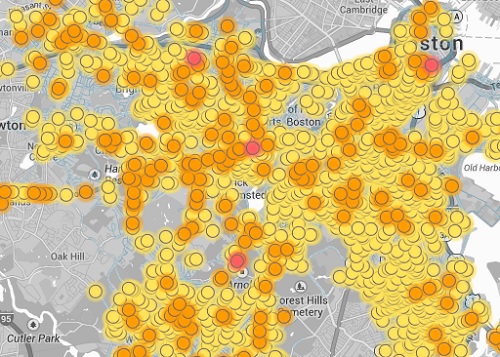Boston: Snapshot of natural gas leaks under the streets
Leaked natural gas – mostly methane – is a powerful contributor to climate change.
As one of the nation's oldest major cities, Boston's aging natural gas pipes are prone to corrosion and leaks.
Explore Boston map data

Click for interactive map
Findings
Our readings indicated an average of about one leak for each mile we drove.
Readings are from March through June 2013 and may not reflect current leaks, due to repairs or other changes.
If you ever smell gas, or have any reason to suspect a problem, experts say to immediately exit the building or area, then call the authorities. For more see the National Grid safety page.
About Boston's natural gas infrastructure
- Utility: We mapped areas serviced by National Grid, a shareholder owned gas and electric company serving areas of New York, Rhode Island, and Massachusetts, which provides gas to most of Boston. Most leaks don't pose an immediate threat to safety or health, but some can. We have shared this data with National Grid.
- Pipe materials: Nearly 45% of the pipes are made from cast iron or other corrosive and leak-prone materials.
- Age of pipes: More than half of the pipes are more than 50 years old.
- Progress: In June 2014, Governor Patrick signed a strong bill to accelerate detection and repair of leaks that pose safety threats. This begins a process to plan and fund long-term pipeline upgrades, which was key to Indianapolis' success.










